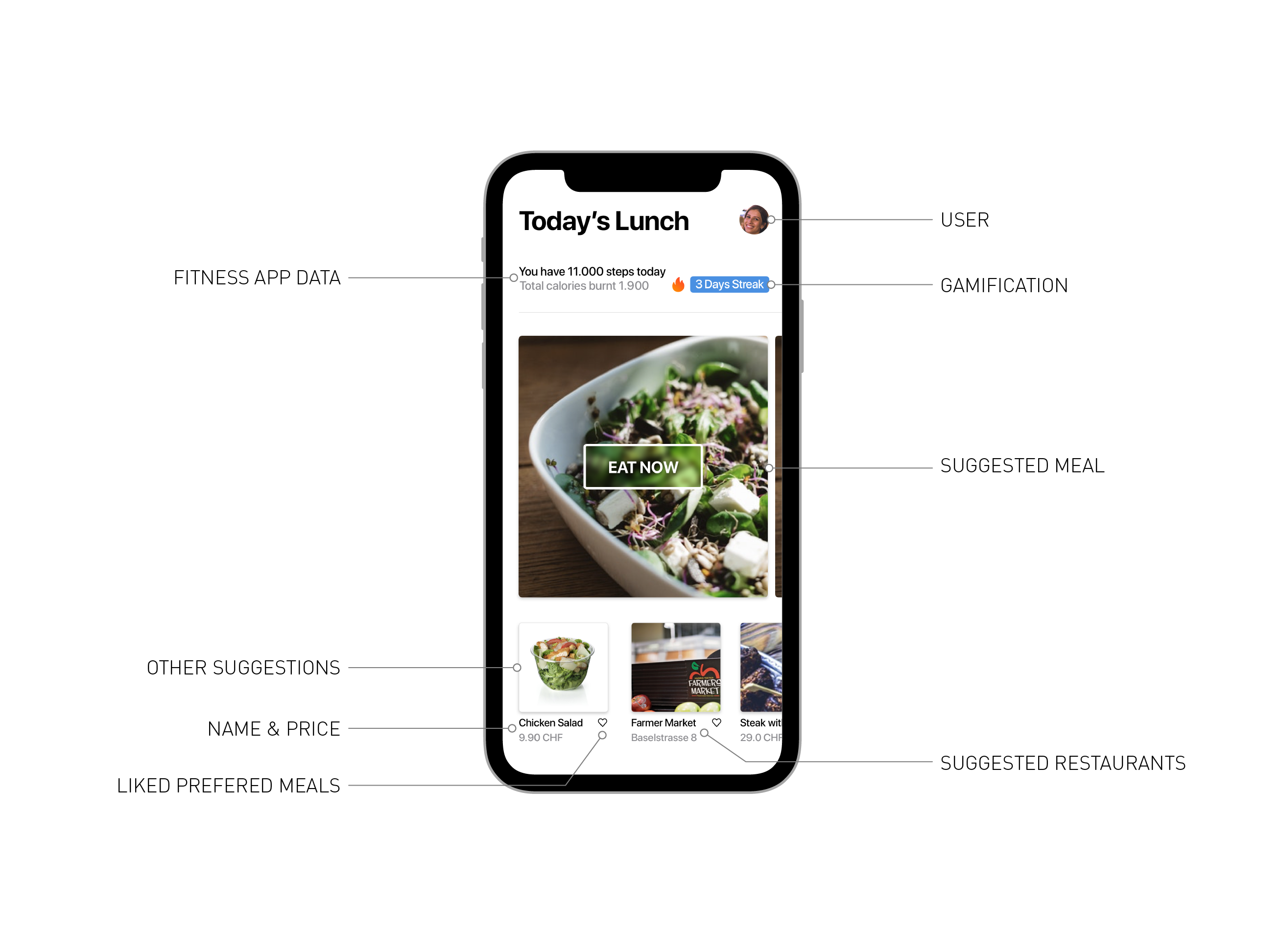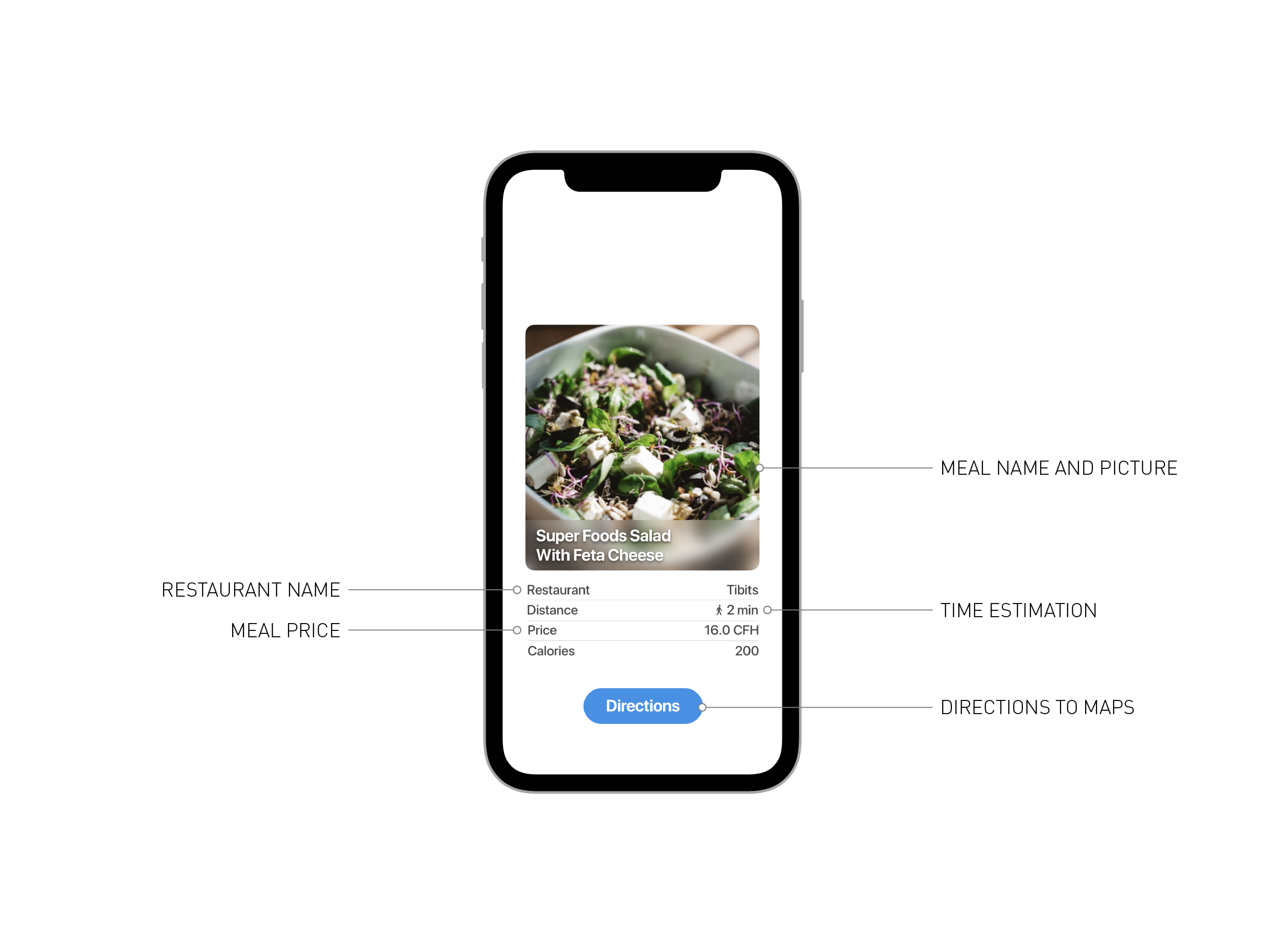Report
💡 Active projects and challenges as of 23.12.2025 15:25.
Hide text CSV Data Package Print
Antonios kitchen solution
The goal of this challenge was to find out how reservation data can be used to do guest predictions for restaurants.
Restaurants face a big problem, that they don't know how many guests are coming the next day or next week. This leads to different problems like:
- Foodwaste
- high personnel costs
- unhappy customers
Our team tried to solve this problem by forecasting the amount of people for noon and evening for a restaurant located in Zürich. This forecasts are afterwards displayed in an App for the kichen chef and the chef de service.
We took data from a reservation system as our brain how the demand was in the past. Together with influencing factors like holidays, weekdays, seasonality we calculated our forecasts. The output of those forecasts is being written in the API of Prognolite. The App, that we developed with an experienced designer connects to the Prognolite API calls the forecasts, weather icons and holidays and visualizes it. We found out that the predictions for the evening are much better than for noon and found the reason in employees who don't register all the walk-ins.
In addition we developed an ExcellPrediction prototype. The Prototype uses turnover data from the past year(s) to make a forecast for future sales, with respect to any relevant parameters such as weather or holidays. Based on the fact that turnover (daily revenue) is correlated (0.95) with table reservations and number of dishes sold, it can be used to make a prediction on how much food restaurant owner needs to buy for the next day, week or month. The model also uses rolling window to adapt the forecast to any new unexpected circumstances.
Team members:
- Roland Brand
- Claudia Fricker
- Eugene Orlov
- Olga Matveeva
- Ewa Guminska
- Etienne Soguel-dit-Piquard
- Roman Lickel
- Simon Michel
Our App:

https://github.com/bar9/prognolite
Presentation:
Berrychecker
We want to digitally educate children in Switzerland to our cultural land and its fruits.
The problem People know very little about what plants grow in the area they live in. They know even less about the edibility of certain plants or the way they can be cooked.
One possible solution: Berrychecker It is an educational app for children and teachers. It’ll issue a challenge for kids to find certain plants in the forest and (depending on the plant) gather them. It’ll offer recipes for children to prepare an easy dish with the plants they found.
Berrychecker verifies the plant found by the children using a large database of pictures and AI. At the same time, every picture taken by the children feeds the database to increase the accuracy. Each picture is geotagged, making it possible to gather data to e.g. map the biodiversity and growing season of a specific area. The concept could possibly be expanded into any part of the world.
Food on Record
We help nutritionists provide faster and better advice to patients.
Abstract
Diana is one of many nutritionists in Switzerland helping people to loose weight, increase fitness and improve health through individual meal plans and continuous feedback.
Her main channel of communication with her patients is WhatsApp.
By analyzing her messaging history and conducting interviews, we realized that important information is spread across different channels, redundant and unorganized.
To increase the efficiency of Diana and raise the quality of her work, we propose an online system to collect and share information between nutritionist and patient. The key features of the system revolve around communication between patient and nutritionist and organizing all information for each client in a cohesive and accessible way. We build automation for tasks that are not emotionally charged like scheduling appointments, classifying products for allergies/intolerances in order for Diana to focus on the personal interaction and communication with the patient during hard times.
In the future we can use the information collected between nutritionist and patient, combine it with open data available for food and products and further increase the information flow between nutritionist and patient and improve the general quality of information in this space.
Next Steps
We will test the prototype together with the Food on Record Network and their patients next. Once we have additional research data and at least 10 individual nutritionists on board providing financial support we will proceed to build the first version of the platform.
GrabFast
Effective shopping experience
Running short of time and still have to shop? With GrabFast we enable you to Grab the food of your wish Fast and reduce shopping chaos.
Team:
- Anton Vladyka
- Simon Drabert
- Kishan Thodkar
ZOE
My smart food assistant
- ZOE for Me
- ZOE for business
- ZOE's data
- ZOE's business model
- ZOE final pitch presentation
- ZOE's next steps
- ZOE's team
Hello I’m ZOE
I’m your personal nutritionist. Choose the lifestyle you want to live and let me help you achieve your goals in a sustainable way.

ZOE For Me
I tried many times to have a more balanced diet and a healthier lifestyle. Often it works out well, especially during the first couple of weeks, then suddenly life kicks in. Stress, holidays, hard work and that’s when everything starts going the wrong way.
ZOE helps me achieve a healthier lifestyle with personalized food recommendations. Small, delicious, healthy daily wins which add up significantly at the end of every week.
I also track my daily activity like steps and calories using my smartphone (and smartwatch) and ZOE uses this information to provide me with personalized food recommendations to achieve my goals and keep me on track. If i don’t like something I skip the recommendation and choose another one.
Once it’s about time for lunch or dinner, ZOE suggests a delicious meal in a restaurant or food shop nearby. If I’m not in the mood for this particular dish, I just swipe left and can choose another one.
Even when I’m out with my friends in our favorite restaurant, ZOE suggest the meals that suit my desired lifestyle.

ZOE for business
Zoe for my restaurant
As the owner of a small local restaurant/food stand, I’m getting more guests, as they learn about the daily menus suiting their way of living. It’s a great feeling knowing, that you don’t only offer your guests a delicious meal but also help them achieve their personal goals.
I was astonished to see, how it easy it is to use. I just upload a picture of the daily dishes, check the approximate nutritional values and the meal is ready to be recommended.
ZOE for my supermarket branch
As the store manager in the local branch I feel the difference in people’s demand. While most of the customers used to roam around the shop not knowing what to eat, they now go straight to the product and buy it. I also noticed, that the price sensitivity in regards to their lunch or dinner shops has decreased.
As the information about our products is automatically provided to ZOE via our ERPs API there is no additional workload at all.
ZOE’s data
Data ZOE needs to work
For tracking the activity ZOE uses the fitness data already gathered by the smart devices of the users, e.g. fitness trackers or smart phones which ZOE can access via APIs
For nutritional values we use
- https://www.foodrepo.org/ (mainly snacks and fruits)
- https://dev.caloriemama.ai/ for automatically aggregate nutritional values of meals served in the restaurants
- Larger food providers (Restaurant Chains, large Supermarkets) via specific APIs and publicly available information - Nutritional information dataset from McDonald's
ZOE learns about restaurant/markets details (Location, Opening Hours etc.) by registration and/or scraping the web.
As the goal is personal behavior change, the accuracy of the data provided from tracking and nutrition is at a suitable level.
Data ZOE’s producing
The aggregated data will come from different sources such:
From free and premium users:
- User Profile (weight, height, age, gender, personal goals)
- Location (kilometers accepted to move from location to restaurant)
- Fitness app (daily steps count, active exercise duration and time of the day, calories burnt etc)
- Restaurant recommendations (types of meals, prefered eating place)
- Customer feedback (liked recommendations, suggestions)
From premium users
- User Profile (type of nutrition, food preferences)
Data ZOE provides for Open Data
The static data generated, e.g. restaurants location, opening hours etc. will be provided as data sets for the open data movement.
Additional data may be provided for other projects, using the data e.g. for food waste optimization etc.
The business plan development phase will study the monetization of data in depth, taking privacy policies such as GDPR and local laws into consideration.
ZOE for investors
Value Proposal - Behavioral Change
The core of the value proposal is an easy way to change the habits of a consumer. Compliance is a critical key success factors for any kind of intervention to achieve a defined health objective. In general only ca 5-8% of the consumers still follow the recommendations after one year. The Behavioral Change will trigger a change in food intake and provide a measurable health benefit.
Business plan
We have a fully developed sustainable business model canvas, which we will share with interested investors. Please get in contact with Stefanos Kofopoulos (stefanos.kofopoulos-at-gmail.com)
ZOE final pitch presentation
Our final pitch presentation for Open Food Hack Days in Basel, 17 February 2018
View the presentation here (video included)
ZOE’s current state and next steps
ZOE is currently a clickable prototype so get a good impression of the functionality and a possible look and feel of the final app.
The necessary data-sources were established and checked and allow ZOE to get the data needed to provide the guidance for the users she aims for.
ZOE will now establish a solid business plan in detail to ensure a funding which allows the team to create the working app as well as promote the app to local businesses, restaurants and most importantly to the people using the app to improve their lifestyle.ZOE Team
- Stefanos Kofopoulos
- Miguel Dans
- Arnold Gloor
- Andrea Küry
- Markus Stauffiger
basel.farm
Connecting city institutions to food producers
Solve the backoffice problem for farmers, while making it easier for them to work with restaurants and caterers and "people from the city". Visit basel.farm for more information.
Scope
- An open database of farmers with the products available to local customers (restaurants, shops, etc...).
- A central pre-order tool for the farmers and their customers with public ledger of transactions (i.e. how much of what and when was sold/bought in the region.
- Master data of all available farmers and products is synced with Land2door. This is an open and unified database of farmers (with their basic identification, location, description, contact) and categorized products.

Stock and booking database
- A simple stock management for the available products for every farmer (availability - date and amount)
- Basic orders information (buyer, seller, product, amount)
Booking system
- Automatic stock synchronization with a history
- Open data feed with real-time transactions
Use-Cases
- Account creation (farm, customer)
- Stock management (add products, remove products, adjust existing items)
- Search Open Data API in the stock (read)
- Book Open Data API (read and write)
